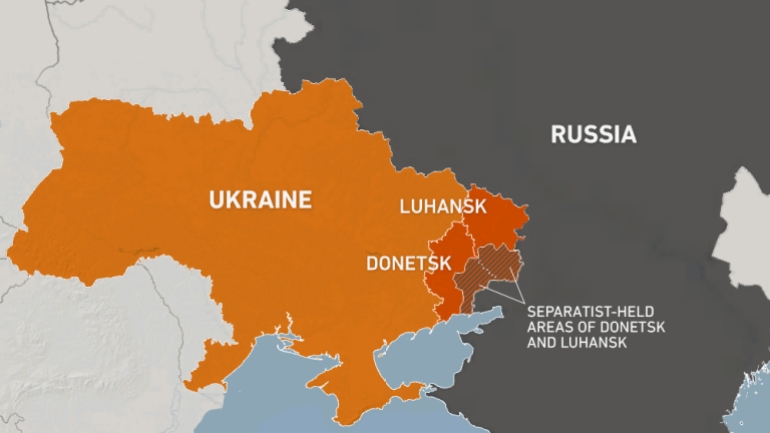The Ukraine & Russia Conflict
February 6, 2022
The conflict between Russia and Ukraine has been going on since 2014, with little progress or further action being taken by both sides. However, in October 2021 the conflict reached heightened tensions and a Russian invasion seemed imminent.
The conflict arose in the Ukrainian capital of Kiev from protests and civil unrest in 2013 of former Ukrainian President Viktor Yanukovych’s refusal to sign a European association agreement that would open its borders for commerce and ease travel restrictions. After a violent response from Ukrainian government forces, the situation worsened and President Yanukovych fled the country in February 2014.
In March 2014, Russia annexed the Ukrainian region of Crimea after a controversial local referendum was passed that declared its independence from Ukraine; the EU claimed this referendum was both “illegal and illegitimate.” Russia defended this move by claiming it was protecting Russian nationals in Crimea and Ukraine’s southeastern region. This caused rising ethnic divisions between pro-Ukrainian and pro-Russian citizens, the regions of Donetsk and Luhansk declaring their independence as well a couple of months after Crimea.
A conflict soon broke out in these two disputed regions (known as Donbas) between pro-Russian separatists supported by the Russian government and Ukraine. Since then, a series of regular skirmishes and firefights have resulted in the deaths of more than 13,000 people, wounding of 13,000, and displacement of 1.5 million people on a front line 280 miles long. The crisis grew worse when a Malaysian Airlines flight was shot down over Ukrainian airspace by a Russian-operated surface-to-air missile in July 2014. All 298 souls on board were killed, pitting both the United States and EU against Russia.
Despite this, a peace agreement signed by both parties in Minsk attempted to resolve the dispute and actuate a ceasefire. It called for an armistice, withdrawal of heavy weaponry, and the return of full control over the disputed regions to Ukraine. Repeated violations of this ceasefire treaty rendered it useless and the conflict transformed into prolonged trench warfare, reaching a stalemate.
Recently, Russia has been accused of moving a significant number of troops and equipment to the Russian-Ukrainian border, indicating to US intelligence officials of a potential invasion in early 2022. Satellite imagery showed 100,000 troops, armor, missiles, and heavy weaponry being moved to the front lines. Over 7,000 tons of fuel, tanks, artillery, weapons systems, and ammunition have also been sent to separatist regions by Russia. The scale of this military activity has not been seen since the Cold War. Russian President Vladimir Putin released a 7,000-word manifesto on July 12 claiming that Russians and Ukrainians were “one people,” apparently citing this as a reason for the heightened military activity.
Western officials (in both the EU and US) condemn this aggressive action taken by Russia, although Moscow denies its intention to invade Ukraine. In December 2021, Russia issued a set of demands citing that the only way for its military forces to be withdrawn is if NATO troops follow suit in eastern Europe and if Ukraine does not join this alliance (North Atlantic Treaty Organization). The US and other NATO members have rejected these demands and warned that if Ukraine is invaded they would be obligated to help, imposing economic sanctions and delivering small arms, weapons, and munitions to Ukraine.
Whether Russia intends to escalate the conflict or launch a full-scale invasion, neither option bodes well for any nation involved. According to US Army General Milley, if these Russian military assets were released upon Ukraine “there would be a significant amount of casualties and it would be horrific.” However, Secretary of Defense Lloyd J. Austin stated that war was not inevitable and a diplomatic solution should be attempted before any action be taken by the US military.
